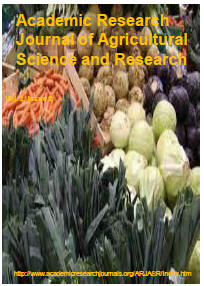| ARJASR |
Academic Research Journal of
Agricultural Science and Research |
||||||||||||||||||||||
|
Academic Research Journal of Agricultural Science and Research Vol. 2(3), pp. 47-56, July, 2014. DOI: 10.14662/ARJASR2014.017. ISSN: 2360-7874 ©2014 Academic Research Journals Full Length Research Estimation of Vegetative Characteristics by Remote Sensing
1John T. Murphy, 2Clenton E. Owensby, 3Jay M. Ham, and 4Patrick I. Coyne
1Professor of Biology, Southwest Baptist University, Bolivar, MO 65613. 2Professor of Range Management, Department of Agronomy , Kansas State University, Manhattan, KS, 66506. 3Professor of Environmental Physics and Micrometeorology, Department of Soil and Crop Sciences, Colorado State University, Ft. Collins, CO 80523; 4EmeritusProfessor of Physiologic Ecology, KSU Ag Research Center, Hays, 67601.
Accepted 8 July 2014
Measurements of biomass,
leaf area and carbon cycling rates are important components for
understanding ecosystem processes. While other techniques are
available to measure these components, remote sensing has the
advantages of non-destructive sampling and sampling at large scales.
An experiment was conducted from June through mid-October of 2006 to
estimate gross canopy photosynthesis (GCP), leaf area index (LAI)
and total aboveground biomass of an ungrazed tallgrass prairie with
a hyperspectral radiometer and compare these estimates to flux
chamber measurements. Four indices (Normalized Difference Vegetation
Index (NDVI), Simple Ratio (SR), (Rnir/Rrededge)-1, and (Rnir/Rgreen)-1
were used to predict LAI and total biomass. Six indices (NDVI, SR,
[(Rnir/Rrededge)-1]*photosynthetically active radiation (PAR),[(Rnir/Rgreen)-1]*PAR,
Photochemical Reflectance Index (PRI) and the Water Band Index (WBI))
were used to derive an estimate of GCP. All indices had poor
correlations to LAI and total aboveground biomass. However, GCP was
significantly correlated to all six indices utilized in this study.
While GCP measured from June-October was significantly correlated to
all indices, removal of the October scans greatly increased the
accuracy of all models except the PRI. This study demonstrates the
strong relationship between GCP and spectral reflectance in the
tallgrass prairie. These relationships may be further utilized with
other methods of measuring carbon exchange to gain greater
understanding of larger scale ecosystem processes.
|
|
|||||||||||||||||||||
